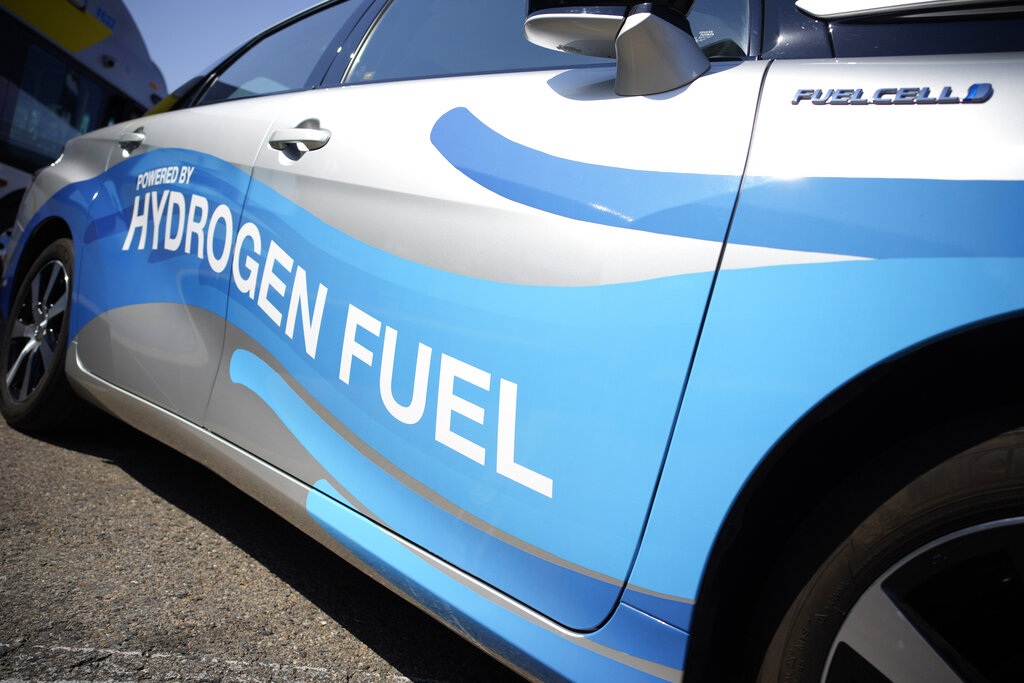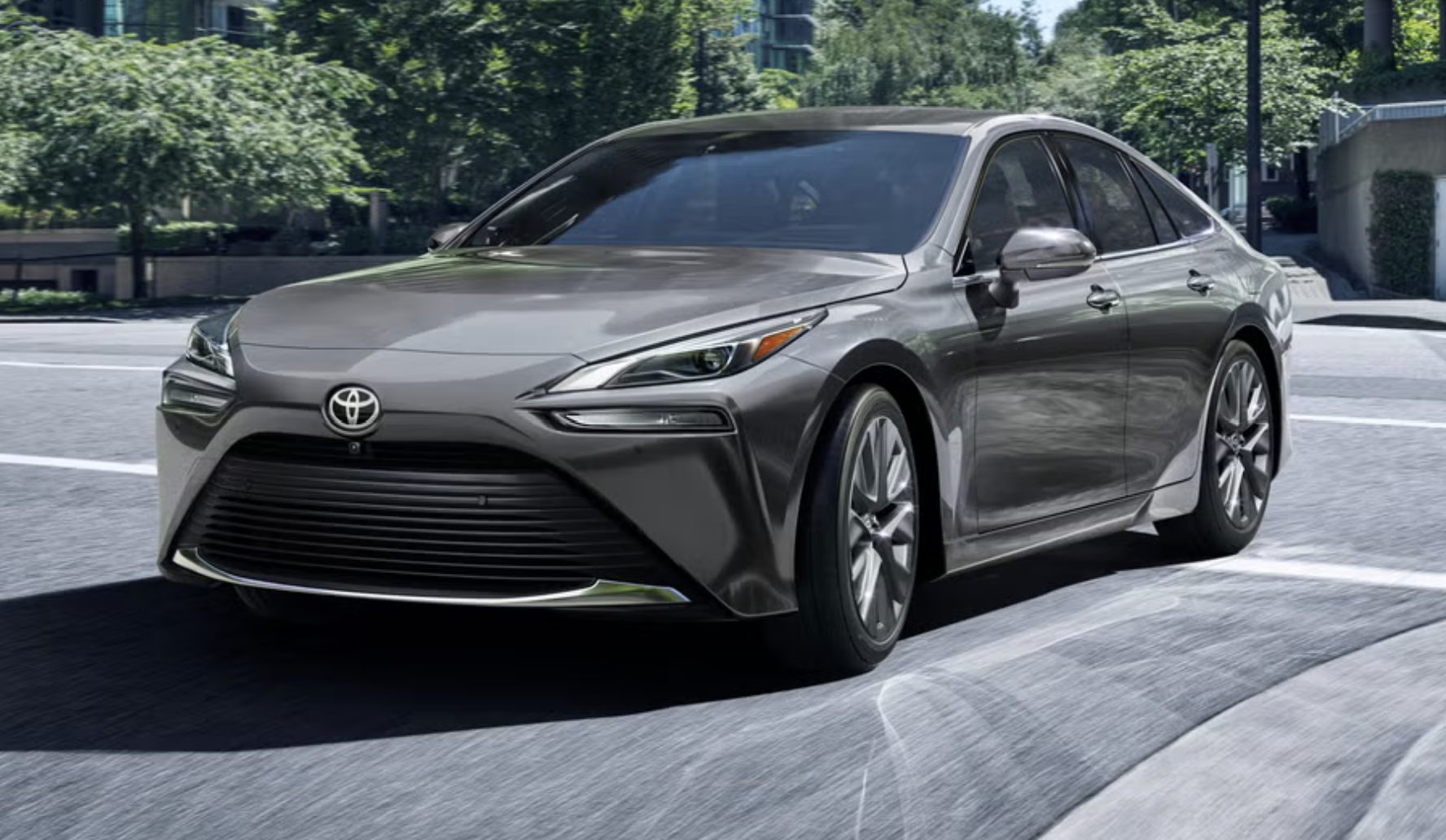
Image Source: A 2021 Toyota Prius powered by hydrogen fuel at display at the Denver auto show in September. (AP pic)
While battery electric vehicles (BEVs) have dominated the shift toward sustainable transportation, hydrogen fuel cell vehicles (FCEVs) remain a potential competitor. These vehicles use hydrogen to generate electricity, emitting only water vapor, making them a promising clean-energy alternative. However, challenges such as infrastructure limitations, cost, and market acceptance have slowed their adoption. This article explores the current state of FCEVs, leading models, their position against EVs, market trends, and future expectations.
What Are Fuel Cell Vehicles?
FCEVs generate electricity through an electrochemical reaction between hydrogen and oxygen in a fuel cell stack. Unlike BEVs, which store energy in lithium-ion batteries, FCEVs produce their own electricity on demand, eliminating the need for long charging times.
One of the biggest advantages of FCEVs is their zero emissions, as the only byproduct is water vapor, making them environmentally friendly. Additionally, they offer fast refueling times, taking only 3 to 5 minutes, much like conventional gasoline-powered vehicles. This makes them an attractive alternative for drivers who are concerned about long charging times in battery EVs.
Moreover, fuel cell vehicles have an extended driving range, with some models exceeding 400 miles per tank, comparable to internal combustion engine (ICE) cars. These factors position hydrogen cars as a viable long-range, fast-refueling solution, especially for sectors like commercial transportation. However, despite these benefits, high production costs, limited hydrogen refueling infrastructure, and energy inefficiencies in hydrogen production remain significant barriers to widespread adoption.
Fuel Cell Cars vs. Battery Electric Vehicles (BEVs)
Examples of Fuel Cell Car Models
While few automakers are investing in FCEVs compared to BEVs, some companies continue to develop hydrogen-powered vehicles. Popular models include:
A Tough Market for Consumer FCEVs
The fuel cell vehicle market remains a niche segment compared to BEVs, facing persistent challenges in adoption. In 2024, Toyota’s global hydrogen car sales declined, highlighting difficulties in markets outside Japan. Meanwhile, China and South Korea continue to lead hydrogen fuel cell development, driven by strong government incentives. In contrast, the U.S. has taken a more cautious approach, prioritizing hydrogen investments in commercial trucks and industrial applications rather than passenger cars.
A major roadblock for widespread hydrogen adoption remains the lack of infrastructure. While some Ohio-based companies are pushing forward with hydrogen vehicle investments, fueling stations are still sparse. Even in California, the state with the most hydrogen stations in the U.S., expansion has been slow. Only 18,000 FCEVs have been sold in the U.S since 2015, with most of the sales being attributed to Toyota’s Mirai model.
Potential for Commercial Use
Despite these hurdles, hydrogen adoption is gaining traction in the commercial sector. Companies like Nikola and Hyzon Motors are actively developing hydrogen-powered trucks, which offer longer range and faster refueling than their battery-electric counterparts. Beyond land transport, the aviation and maritime industries are also exploring hydrogen-powered aircraft and ships as a means to decarbonize their operations, positioning fuel cells as a potential solution for sectors where battery technology faces limitations.
Expectations for the Future
As the automotive industry continues its transition to cleaner energy sources, hydrogen fuel cell technology is expected to evolve in key areas. One of the most pressing challenges is the expansion of the hydrogen fueling network. Currently, refueling infrastructure remains limited, but if countries invest in hydrogen hubs, adoption could increase. However, growth in this area has been slow, and significant investment is needed to make refueling stations more accessible.
Another critical development will be reducing hydrogen production costs and transitioning to green hydrogen. Most hydrogen today is produced using fossil fuels, limiting its environmental benefits. Advancements in electrolysis using renewable energy sources could make hydrogen both cleaner and more affordable, helping to improve the overall sustainability of FCEVs.
Hydrogen-powered commercial vehicles will likely drive most of the adoption in the coming years. Hydrogen trucks, buses, and industrial vehicles are already being developed, and they may become the primary use case for fuel cells rather than passenger cars. In heavy transport, where battery weight and long charging times are disadvantages, fuel cells offer a more practical alternative. Rather than directly competing with BEVs, FCEVs may ultimately serve a complementary role.


